Paths and walkways are an integral part of every garden. They allow you to get from one place to another easily to maintain the garden. But paths and walkways don’t need to be only practical; they can easily become decorative and beautiful.
This can be done by planting interesting plants and ground covers, which will add color and life to them and your garden. All you need are varieties that can stand foot traffic.
Now you must think that the list of plants you can use for this purpose is small, but in fact, there are so many of them to choose from. Of course, just like any plant in your garden, stables require care.
They are pretty low maintenance, though. And most of them spread and multiply as well. We believe you are already intrigued and want to know which plants are most suitable for paths and walkways.
Blue Star Creeper
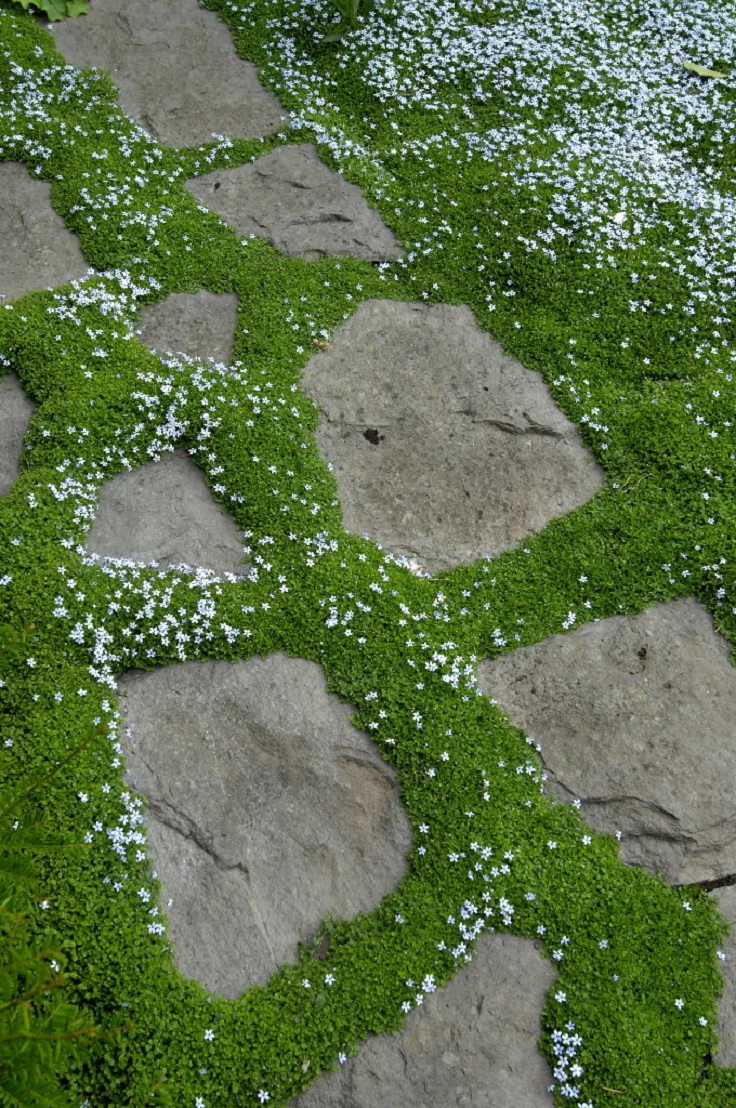
photo via blog.oregonlive.com
Blue Star Creeper or Isotoma Fluviatilis is one of the most common plants used for pathways and walkways. Their tiny but beautiful flowers are just one of the reasons why they are such a popular choice. But the main reason is their versatility and ability to handle heavy foot traffic without a problem. This delightful creeping perennial is also very easy to grow and will multiply and spread in no time.
Creeping Thyme
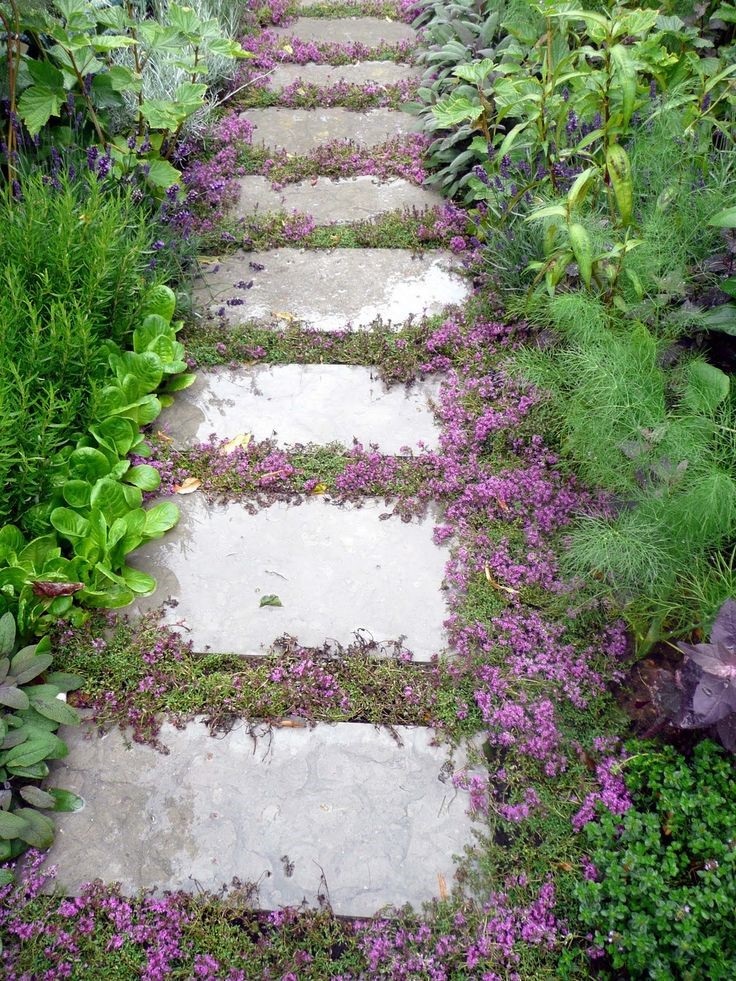
photo via zestyourgarden.com
Creeping Thyme, also known as ‘Mother of Thyme,’ is an easily grown, spreading thyme variety. It has nice gray-green foliage and beautiful pink flowers. So this means both texture and color. It is also a very low maintenance plant that is drought tolerant. It will thrive perfectly between flagstones.
Country Park
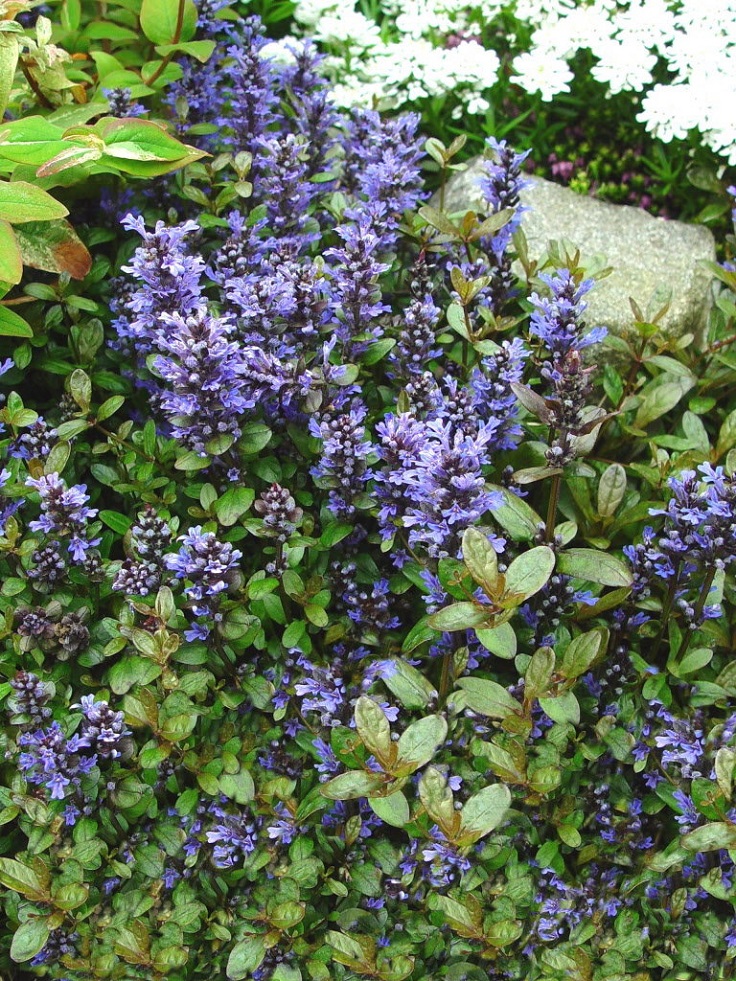
photo via oregonlive.com
Country Park, also known as Pratia pedunculata, is an amazing creeper that will wow you with its tiny green leaves and violet flowers. This evergreen is ideal for planting between paving stones. It prefers evenly moist soil. You can easily multiply it by ripping apart into small pieces to make new plantings in spring.
Irish Moss
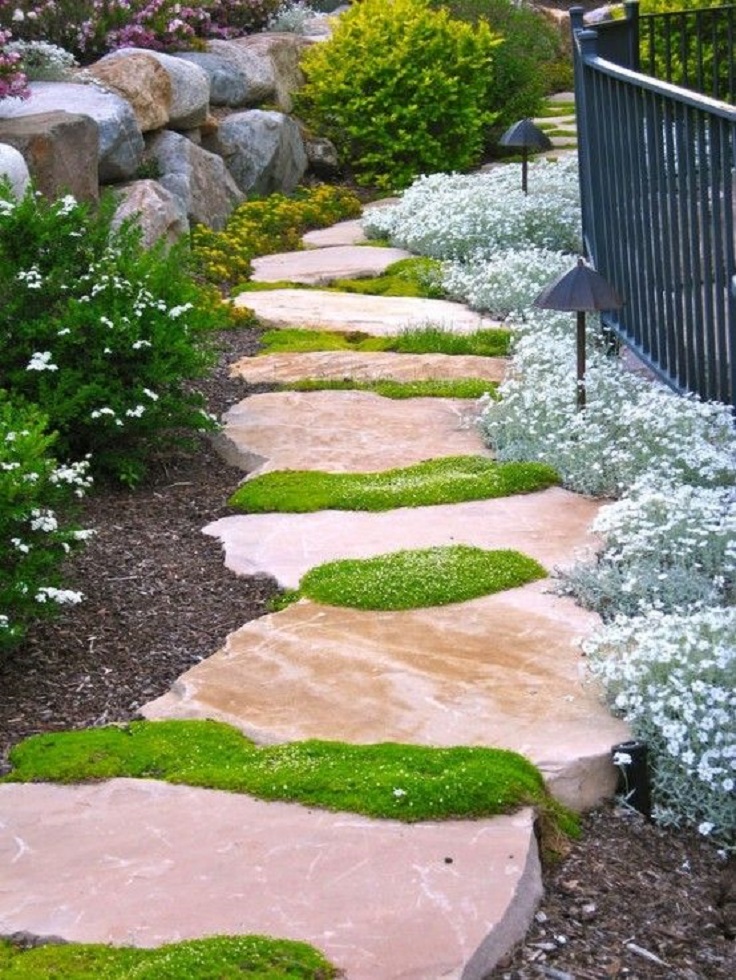
photo via digsdigs.com
Sagina Subulata is an extremely popular creeping plant that is commonly used in paths and walkways. It forms a very low moss-like carpet of bright shamrock-green foliage. Tiny little white flowers begin to appear in late spring. If you want to incorporate Irish Moss into your garden, have in mind that it doesn’t like drought and soggy wet soils.
Brass Buttons
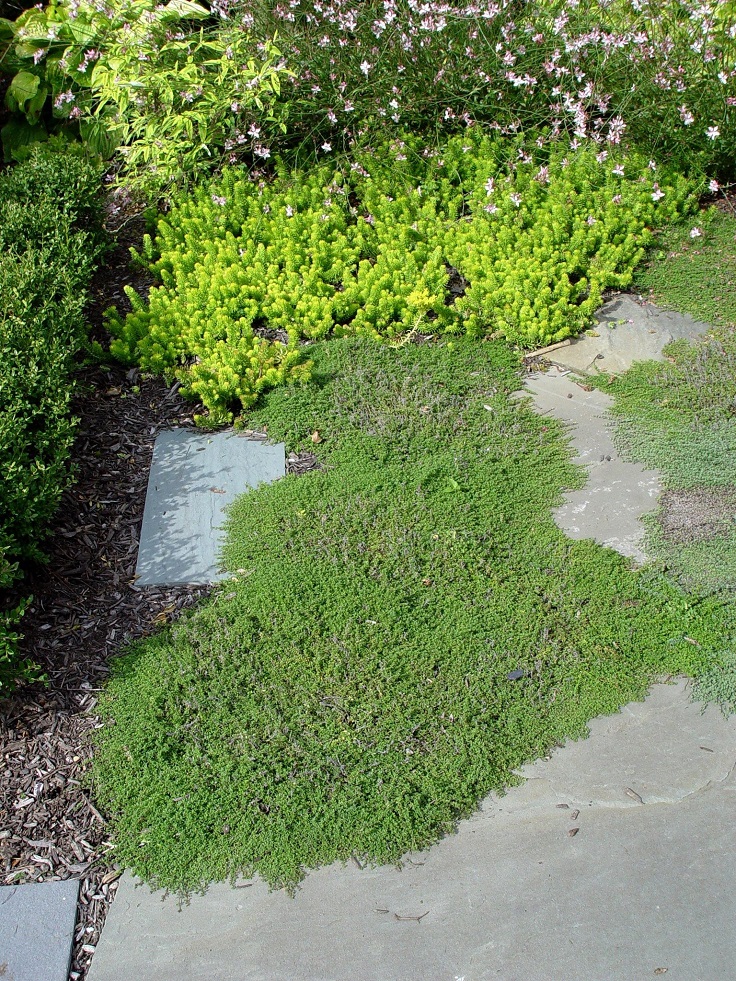
photo via blog.pennlive.com
Leptinella Squalida is an excellent evergreen plant for paths and walkways. It is low growing and very easy to care for. The feathery, fern-like foliage would make you think it is fragile and delicate, but in fact, it is a very tough plant that can take light foot traffic pretty well. If you want speedy coverage, then Brass Buttons are one of the best choices.
Creeping Jenny
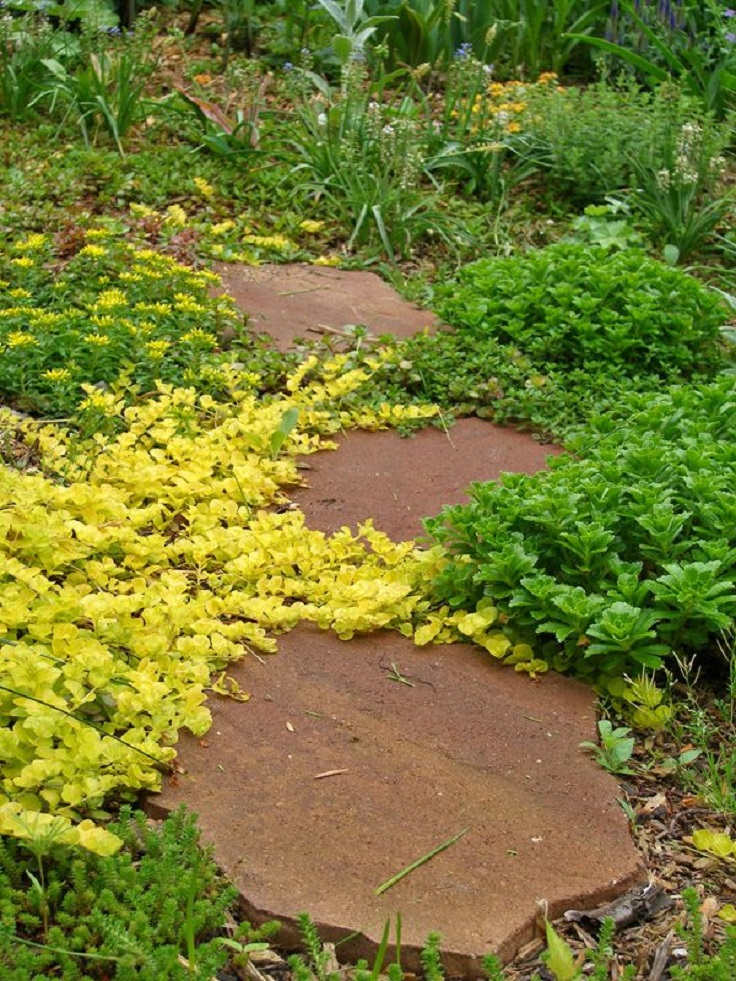
photo via pinterest.com
Creeping Jenny or Lysimachia Nummilaria is also known as moneywort. It has beautiful yellowish-green leaves that turn orange in winter, so besides being a tough, low-maintenance plant, it is very decorative. This perennial creeper loves the afternoon sun so make sure it gets plenty of it.
Creeping Sedum
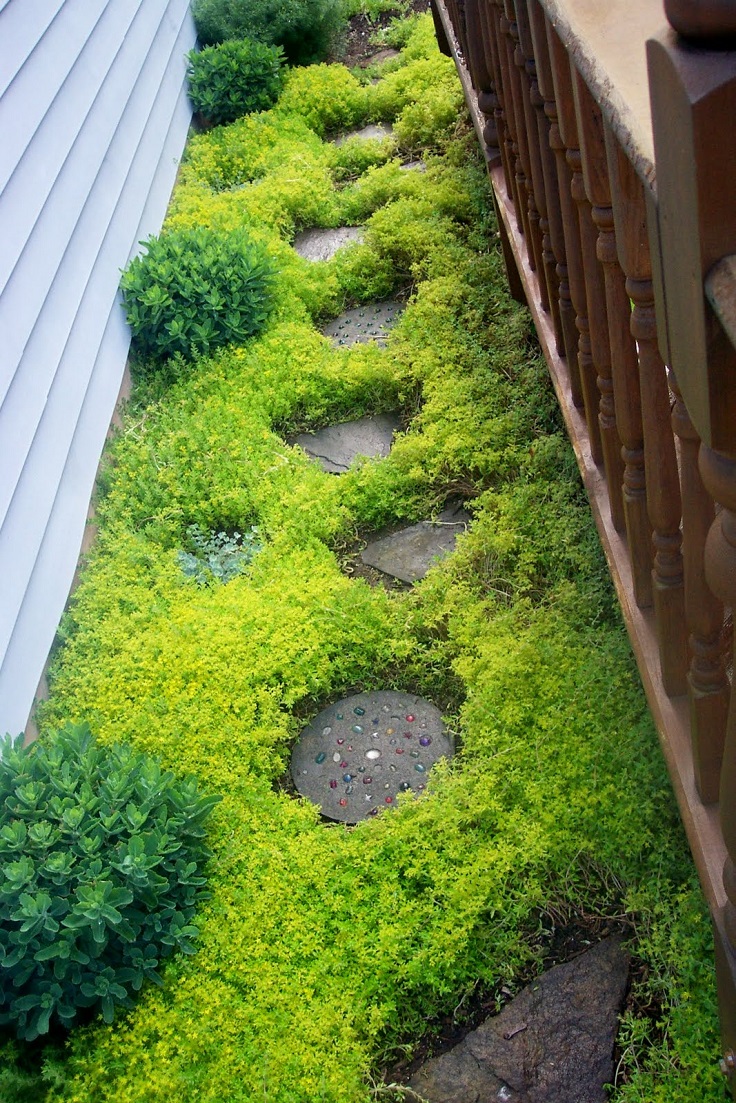
photo via thegardenglove.com
Creeping Sedums do very well in harsh environments, so they make the ultimate pathway plants. They love the sun and lean soil. Do not overwater them. These creeping sedums will stay close to the height of mowed grass. They come in many foliage colors and leaf forms and flower in summer with small pink, white, red, or yellow blooms.
Plumbago
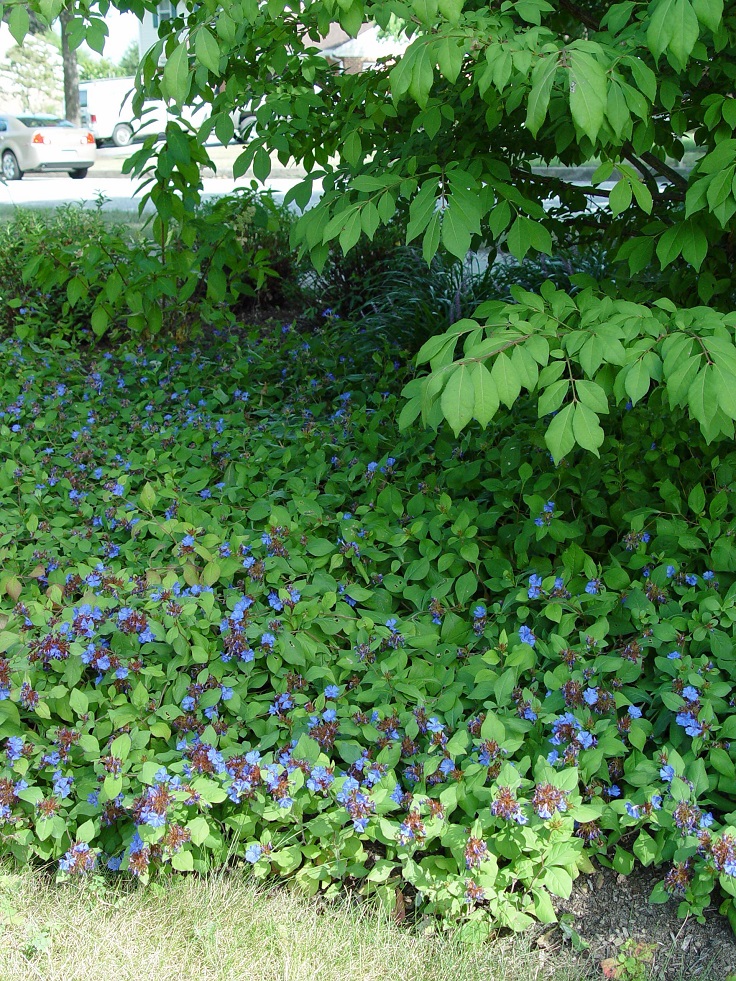
photo via pixgood.com
Plumbago (Ceratostigma plumbaginoides) is actually a herb, and it is very easy to grow and spread. It is commonly used as a ground cover because of its beautiful green leaves and small blue flowers. Plumbago thrives best in full sun, but it can tolerate partial shade as well. It can tolerate dry soul pretty well.
Alpine Lady’s Mantle
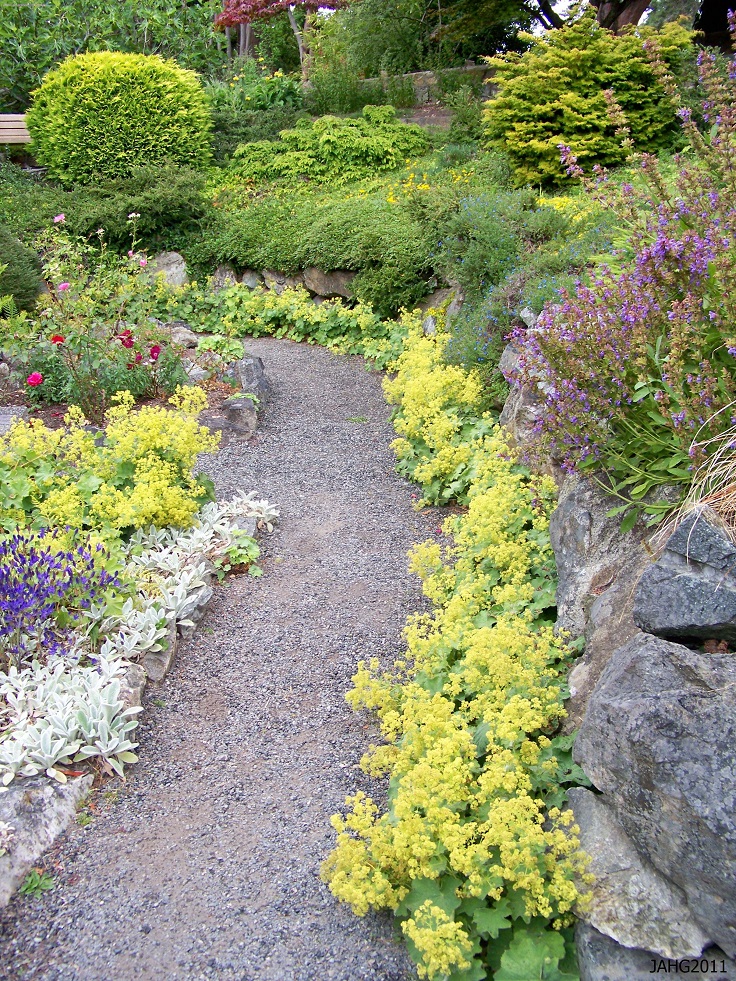
photo via namethatplant.wordpress.com
Smaller and more refined than Lady’s Mantle’s usual form, this species is best suited to the rock garden or for edging. Alchemilla alpine or Alpine Lady’s Mantle has bright green leaves and beautiful yellow flowers in summer. It is a very attractive plant that will bring texture and color to your garden.
Baby’s Tears
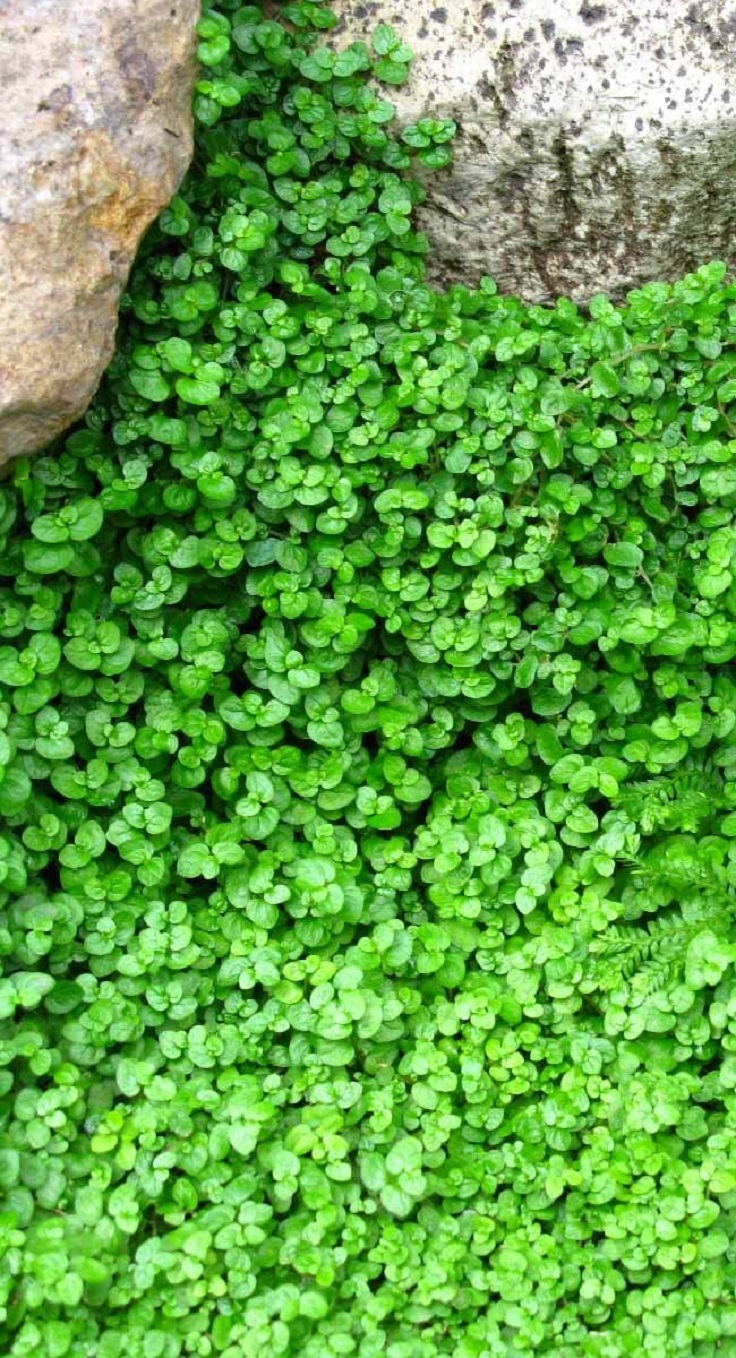
photo via tandlnursery.com
Soleirolia Soleirolii, commonly known as Baby’s Tears, will bring a beautiful texture and sweet fragrance to your garden. It is a gorgeous ornamental plant to have as a ground cover as it creates a green carpet that turns red in autumn. Baby’s Tears is low-maintenance and can grow both in shade and sun.

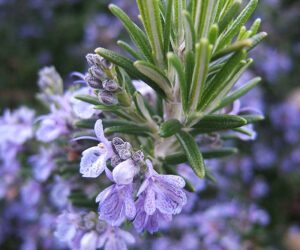

I have to say great article! I work in a greenhouse and sell all of these so thank you! However I noticed your photo ID of “pratia” is actually a photo of Bugleweed botanical-Ajuga, either mint chip or chocolate chip variety. May help to fix this so as not to confuse those searching it out in the retail world.
Yes, I also noticed this right away.
You also spelled ‘ pieces’ wrong. You used Peace’s.
Looking for a good ground cover that can survive the Florida heat even in the shade.
Pachysandra (sp?)
Boy I have money wort and it can take over. I am forever cutting it back from other plants in the area and pathways. But I do not have to weed a large area under same maple and azela bushes. The money wort grows dense enough to keep weeds away.
I was struck by how similar-looking Baby Tears is to the common chickweed, which is also a nutritious edible. After reading this enjoyable article, I’m tempted to stop pulling up the chickweed and encourage it instead!
Would this creeper work to cover lawn area? My grass is terrible and I don’t want the maintenance.
Diane
I wish growing zones had been listed for each plant, as well as the soil and light requirements.
The Australian native violet is also a stunning ground cover.
I’ve found you have to be very careful with some of these ground covers. They can take over your lawn. For instance, creeping sedum. I’m constantly pulling this up in our yard. It will actually take over and stop grass from growing, leaving bare spots in the winter. So consider using any of these with caution.
I agree w/Jean’s comments and also want to suggest you add caution notes where needed. For example, where there’s a potential for invasiveness. Good start however. I’m interested in a couple of these so will go to my handy/dandy Sunset Garden Book for further info.
KathiCalif
Don’t plant baby’s tears! It will take over everything and is impossible to get rid of unless you poison it and everything near it!!